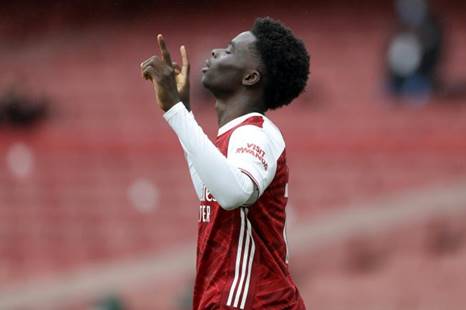By John Maiden
Last weekend, in the wake of Euro 2021, there was an interesting article by Julian Coman in the Observer concerning the England and Premiership football stars Marcus Rashford, Bukayo Saka and Raheem Sterling. For those of you who don’t follow football (by which I mean ‘soccer’) – and I will resist the temptation to say ‘or have been asleep for the last month’ – these three players helped drive the English football team all the way to the incredible achievement of the final of the tournament, the nation’s first since 1966. The article headline made a further observation: that Rashford, Saka, Sterling and others ‘blaze a trail for black British Christians’.
Coman’s piece sent me off on a couple of thought pathways. First, about the timeliness of the article. Prayers and symbolic gestures (e.g. hands pointing to the sky) seem to me increasingly common in English Premiership football. This is not just about black British footballers who may have a background in ‘black majority churches’ (BMCs) – it is also Catholic and Orthodox footballers (e.g. performing the sign of the cross) of various nationalities and ethnicities, and also Muslims, for example Paul Pogba (of my beloved Manchester United) and Mohamed Salah (great player, shame about his club…).
Such displays of religious piety in the top-flight of English football are not new. I can remember watching Manchester United from the Stretford Paddock as a teenager and noticing a few players, some British but often those of visiting Italian and Polish clubs, signing the cross. However, anecdotally, I would say that in the last 10-15 years the frequency and visibility of these personal, ‘lived’ religious rituals on the pitch has grown markedly.
One might conjecture (as does Coman) that the Premier League’s explosion of wealth, and the number of African and South American players who have signed for English teams. These have included pentecostals, Catholics and Muslims, whose personal rituals have made piety more common place and ‘acceptable’ in football subculture. If so, perhaps a knock-on effect has been that British footballers with religious backgrounds are inspired or emboldened to express individual devotion on the field of play. Whatever the factors involved, my point is that in our celebrity and sports-driven culture, it is probably footballers who offer the most high-profile manifestation of religious practice and belief in British public life. An estimated 31 million people watched the Euro 2021 final in the UK; but millions also watch the Premier League and all the various domestic and European knock-out tournaments every week. As well as watching these players’ goals, tackles and saves, we are observing their everyday religion.
I want to stress again that none of the above is based on hard data, but rather my own subjective observations. However, more concretely the Coman article got me thinking about my research on the construction of wider public perceptions of Black Christianity – and specifically the black majority churches – in Britain. I have recently published on this in an article for Twentieth Century British History. I can’t rehearse the argument fully in a blog post, but the basic point is that in the post-war period, the press and the leaders of historic mainline churches in Britain were very slow to pay serious attention to the BMCs and their impact on the urban religious landscape. At the end of the 1970s, many white liberal Christians and commentators still tended to think of black majority churches as ‘ghetto congregations’.
However, around this time, with the growing assertion of Black consciousness amongst church leaders, and the efforts of a minority of white Christians to adopt a non-paternalistic attitude towards these congregations, an alternative narrative began to emerge – of BMCs raising the possibility of resacralisation in a social context of rapid secularisation. As the radical theologian Trevor Beeson wrote in The Guardian in 1979, “in these African and West Indian churches lies the best hope of re-Christianizing the British nation and in helping the weary churches of these islands to re-discover the true character of Christian faith and worship.”
With the coming of multiculturalism in public policy, increasingly BMCs were thought of as institutions providing community leadership, organisation and social capital (see for example, the BBC documentary ‘Life and death the Pentecostal way’). The Coman article contributes also to this evolving narrative. Media and academic representation of BMCs in the 1960s and 1970s tended to depict embattled, insular congregations. Now Black Christian traditions are described as being about ‘the embodiment of faith, how you live out what you say in a Sunday service.’ As footballers are increasingly thought to offer moral leadership in civil society, due attention needs to be given to the religious influences which have shaped them.

